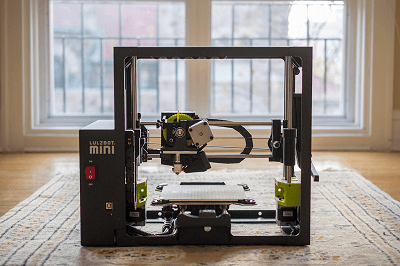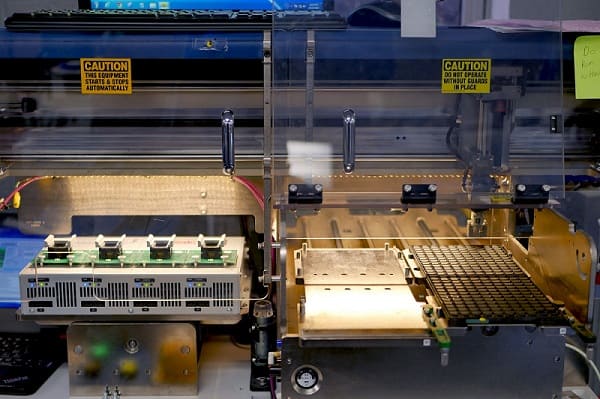In the evolving world of technology, 3D printers stand out as one of the most innovative tools revolutionizing various industries. From manufacturing to healthcare, education, and even the arts, 3D printers have proven their worth by creating new possibilities and enhancing efficiency. This article delves into the modern advantages of 3D printers, exploring how they are shaping the future and why businesses and individuals alike should embrace this transformative technology.
Introduction to 3D Printer Technology
3D printing, or additive manufacturing, is the process of creating three-dimensional objects from a digital file. This technology has come a long way since its inception in the 1980s and has rapidly grown into a crucial component of multiple industries. It allows for the creation of objects layer by layer, offering unparalleled precision and customization options compared to traditional manufacturing methods.
What sets 3D printers apart is their ability to produce highly detailed objects with less waste, faster turnaround times, and more design freedom. The increasing availability of 3D printing technology and the reduction in its costs have made it accessible to a wider audience, from large enterprises to small businesses and hobbyists.
The Benefits of 3D Printer Technology
Enhanced Design Flexibility
One of the most significant advantages of 3D printers is the freedom they provide in design. Unlike traditional manufacturing methods that rely on molds, cutting, or casting, 3D printing allows designers to create intricate and complex shapes that would be nearly impossible with other techniques.
With 3D printers, there is no need for complicated tooling, and the design process becomes more iterative. Designers can tweak and adjust designs quickly, making real-time changes that wouldn’t be feasible with conventional methods. This level of design flexibility empowers businesses to innovate rapidly and efficiently, responding to market demands faster than ever before.

Reduced Manufacturing Costs
Another standout feature of 3D printers is their ability to reduce manufacturing costs. Traditional methods often require expensive molds, tools, and machinery, which can be a significant financial burden, especially for small businesses. In contrast, 3D printing eliminates the need for such costly investments by utilizing a simpler, more direct process.
The ability to produce prototypes, spare parts, and custom designs in-house also cuts down on outsourcing costs. Moreover, the reduction in material waste significantly lowers the cost of raw materials, further contributing to overall cost savings. This makes 3D printing an economical choice for businesses looking to streamline their production processes.
Faster Production Times
Speed is a crucial factor in today’s fast-paced world, and 3D printers excel in this area. Traditional manufacturing methods often involve long lead times for production due to tooling, setup, and testing processes. 3D printing, on the other hand, operates on a much faster timeline.
Once the design file is ready, 3D printers can start producing objects immediately, with some machines capable of producing parts in a matter of hours. This swift turnaround is particularly advantageous in industries where time-to-market is critical, such as consumer electronics, automotive, and healthcare. With 3D printing, businesses can meet demand faster, reducing delays and keeping up with the competition.
Customization and Personalization
Customization is another area where 3D printers shine. Traditional manufacturing often struggles with cost-effective ways to produce highly personalized or custom products, particularly when it comes to small batches. 3D printing offers an easy and cost-effective solution to this problem by enabling the production of unique, bespoke items.
For example, in the healthcare industry, 3D printers can create custom prosthetics or implants that are tailored to an individual’s unique anatomy. In the fashion industry, designers can craft personalized accessories or clothing pieces that are one-of-a-kind. The ability to easily and efficiently produce custom items opens up new avenues for businesses to offer tailored products, enhancing customer satisfaction and engagement.
Sustainability and Waste Reduction
As the world faces increasing environmental concerns, sustainability has become a focal point for businesses and consumers alike. 3D printing offers a sustainable alternative to traditional manufacturing processes, particularly in terms of waste reduction.
Traditional manufacturing often involves subtracting material from a larger piece, leading to significant waste. In contrast, 3D printers work by adding material layer by layer, which reduces excess waste and ensures that only the necessary amount of material is used. This more efficient use of resources not only benefits the environment but also contributes to cost savings for businesses.
Moreover, many 3D printers now use biodegradable or recyclable materials, further enhancing their eco-friendly credentials. As sustainability becomes increasingly important, 3D printing is emerging as a key player in creating greener, more sustainable manufacturing practices.
Real-World Applications of 3D Printer Technology
3D Printing in Healthcare
The healthcare industry has seen some of the most impressive advancements with the use of 3D printers. From prosthetics to medical devices, 3D printing is helping to create highly customized solutions that improve patient outcomes.
For example, 3D printers can create prosthetic limbs tailored to an individual’s specific measurements, leading to better comfort and functionality. Additionally, 3D printing is being used to develop patient-specific surgical models and implants, which can help surgeons plan complex procedures with greater precision. The ability to rapidly produce customized healthcare products has the potential to revolutionize patient care.
3D Printing in Manufacturing
The manufacturing industry was one of the first to embrace 3D printing, and its impact has been transformative. 3D printers are now used for producing prototypes, spare parts, and even end-use products, particularly in industries such as automotive and aerospace.
In automotive manufacturing, 3D printing is used to produce lightweight components, reducing the overall weight of vehicles and improving fuel efficiency. Similarly, in aerospace, 3D printers create parts that are both strong and lightweight, helping to reduce fuel consumption and increase the performance of aircraft. These innovations have made 3D printing an indispensable tool in modern manufacturing.
3D Printing in Education
In the field of education, 3D printers are transforming the way students learn and engage with content. Whether it’s creating 3D models for science projects or designing prototypes for engineering courses, 3D printing offers students hands-on experience with the latest technology.
Educational institutions are increasingly adopting 3D printing as part of their curriculum, providing students with the skills needed for future careers in design, engineering, and technology. By integrating 3D printing into the classroom, schools and universities are preparing the next generation of innovators.
Conclusion: The Future of 3D Printer Technology
The impact of 3D printers on the modern world cannot be overstated. From revolutionizing manufacturing to enabling unprecedented levels of customization and sustainability, 3D printing is changing the way we create and interact with products.
As the technology continues to evolve, we can expect even more exciting developments in the future. Whether it’s the creation of human tissues in healthcare or the production of fully customized products for consumers, the possibilities are virtually limitless. Businesses that embrace 3D printing will gain a competitive edge, enabling them to offer more innovative, efficient, and sustainable solutions.
In the coming years, 3D printing is poised to become even more integrated into our everyday lives, offering opportunities for growth and advancement across a wide range of industries. As the technology becomes more accessible and cost-effective, the world of 3D printing will continue to unlock new potential and redefine what’s possible in manufacturing, design, and beyond.
Embracing 3D printer technology today is not just about staying ahead of the curve; it’s about shaping the future of innovation and sustainability. It’s time to rethink what’s possible and harness the transformative power of 3D printers to create a better tomorrow.
